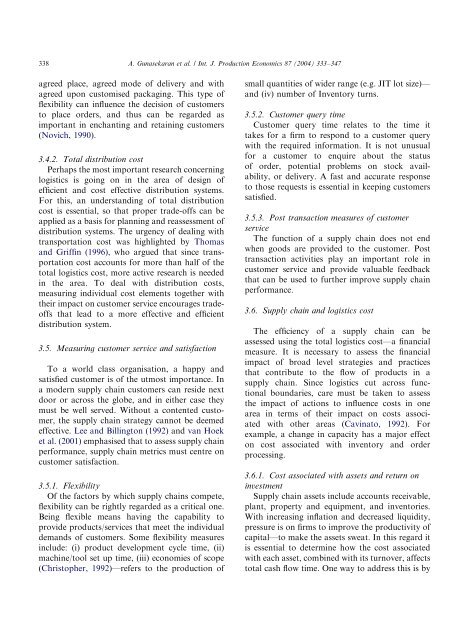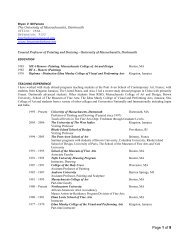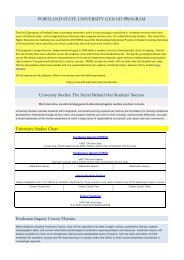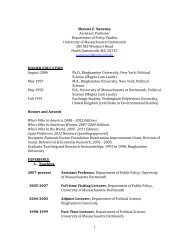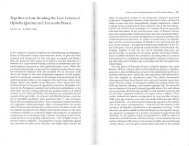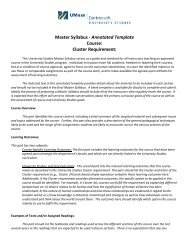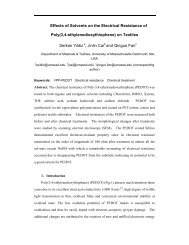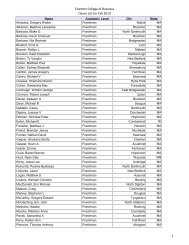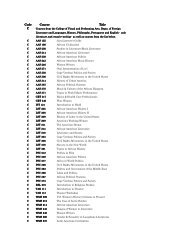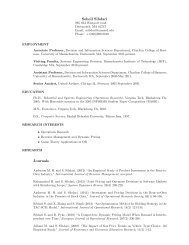A framework for supply chain performance measurement
A framework for supply chain performance measurement
A framework for supply chain performance measurement
You also want an ePaper? Increase the reach of your titles
YUMPU automatically turns print PDFs into web optimized ePapers that Google loves.
ARTICLE IN PRESS338A. Gunasekaran et al. / Int. J. Production Economics 87 (2004) 333–347agreed place, agreed mode of delivery and withagreed upon customised packaging. This type offlexibility can influence the decision of customersto place orders, and thus can be regarded asimportant in enchanting and retaining customers(Novich, 1990).3.4.2. Total distribution costPerhaps the most important research concerninglogistics is going on in the area of design ofefficient and cost effective distribution systems.For this, an understanding of totaldistributioncost is essential, so that proper trade-offs can beapplied as a basis <strong>for</strong> planning and reassessment ofdistribution systems. The urgency of dealing withtransportation cost was highlighted by Thomasand Griffin (1996), who argued that since transportationcost accounts <strong>for</strong> more than half of thetotallogistics cost, more active research is neededin the area. To dealwith distribution costs,measuring individualcost elements together withtheir impact on customer service encourages tradeoffsthat lead to a more effective and efficientdistribution system.3.5. Measuring customer service and satisfactionTo a world class organisation, a happy andsatisfied customer is of the utmost importance. Ina modern <strong>supply</strong> <strong>chain</strong> customers can reside nextdoor or across the globe, and in either case theymust be well served. Without a contented customer,the <strong>supply</strong> <strong>chain</strong> strategy cannot be deemedeffective. Lee and Billington (1992) and van Hoeket al. (2001) emphasised that to assess <strong>supply</strong> <strong>chain</strong>per<strong>for</strong>mance, <strong>supply</strong> <strong>chain</strong> metrics must centre oncustomer satisfaction.3.5.1. FlexibilityOf the factors by which <strong>supply</strong> <strong>chain</strong>s compete,flexibility can be rightly regarded as a critical one.Being flexible means having the capability toprovide products/services that meet the individualdemands of customers. Some flexibility measuresinclude: (i) product development cycle time, (ii)machine/toolset up time, (iii) economies of scope(Christopher, 1992)—refers to the production ofsmall quantities of wider range (e.g. JIT lot size)—and (iv) number of Inventory turns.3.5.2. Customer query timeCustomer query time relates to the time ittakes <strong>for</strong> a firm to respond to a customer querywith the required in<strong>for</strong>mation. It is not unusual<strong>for</strong> a customer to enquire about the statusof order, potential problems on stock availability,or delivery. A fast and accurate responseto those requests is essentialin keeping customerssatisfied.3.5.3. Post transaction measures of customerserviceThe function of a <strong>supply</strong> <strong>chain</strong> does not endwhen goods are provided to the customer. Posttransaction activities play an important role incustomer service and provide valuable feedbackthat can be used to further improve <strong>supply</strong> <strong>chain</strong>per<strong>for</strong>mance.3.6. Supply <strong>chain</strong> and logistics costThe efficiency of a <strong>supply</strong> <strong>chain</strong> can beassessed using the totallogistics cost—a financialmeasure. It is necessary to assess the financialimpact of broad level strategies and practicesthat contribute to the flow of products in a<strong>supply</strong> <strong>chain</strong>. Since logistics cut across functionalboundaries,care must be taken to assessthe impact of actions to influence costs in onearea in terms of their impact on costs associatedwith other areas (Cavinato, 1992). Forexample, a change in capacity has a major effecton cost associated with inventory and orderprocessing.3.6.1. Cost associated with assets and return oninvestmentSupply <strong>chain</strong> assets include accounts receivable,plant, property and equipment, and inventories.With increasing inflation and decreased liquidity,pressure is on firms to improve the productivity ofcapital—to make the assets sweat. In this regard itis essentialto determine how the cost associatedwith each asset, combined with its turnover, affectstotalcash flow time. One way to address this is by


